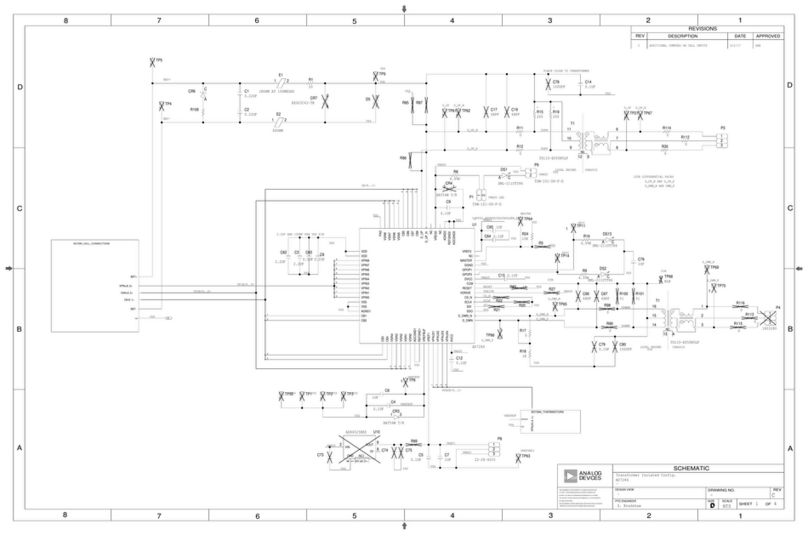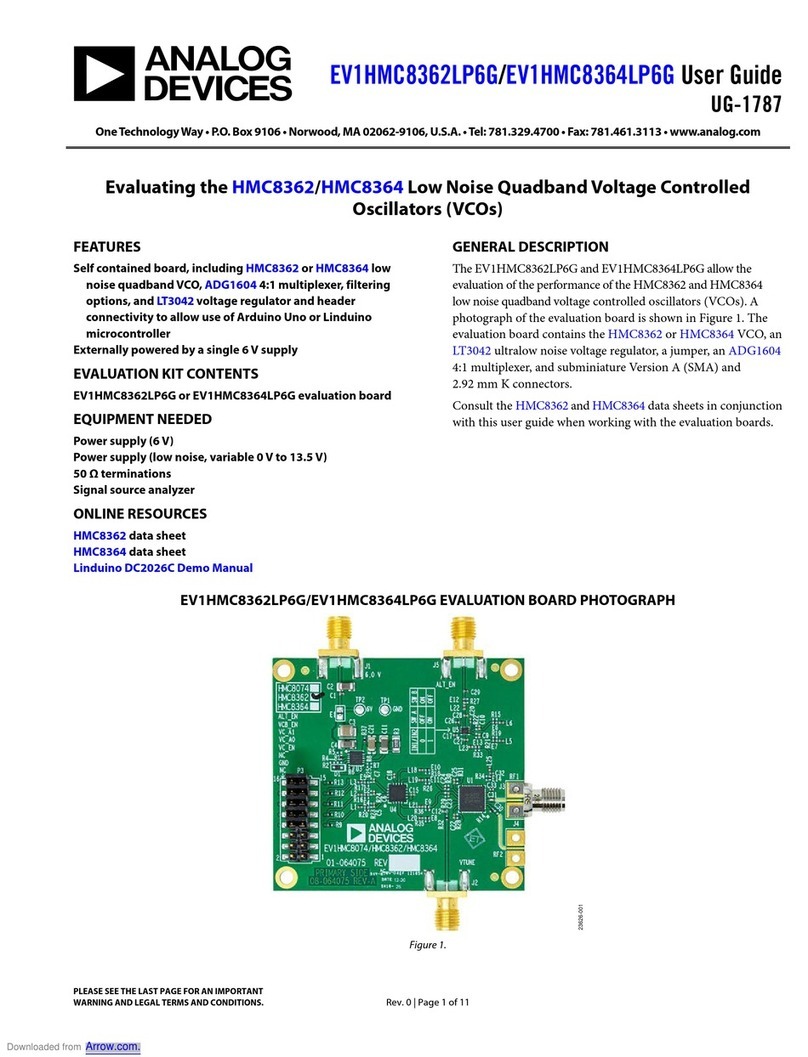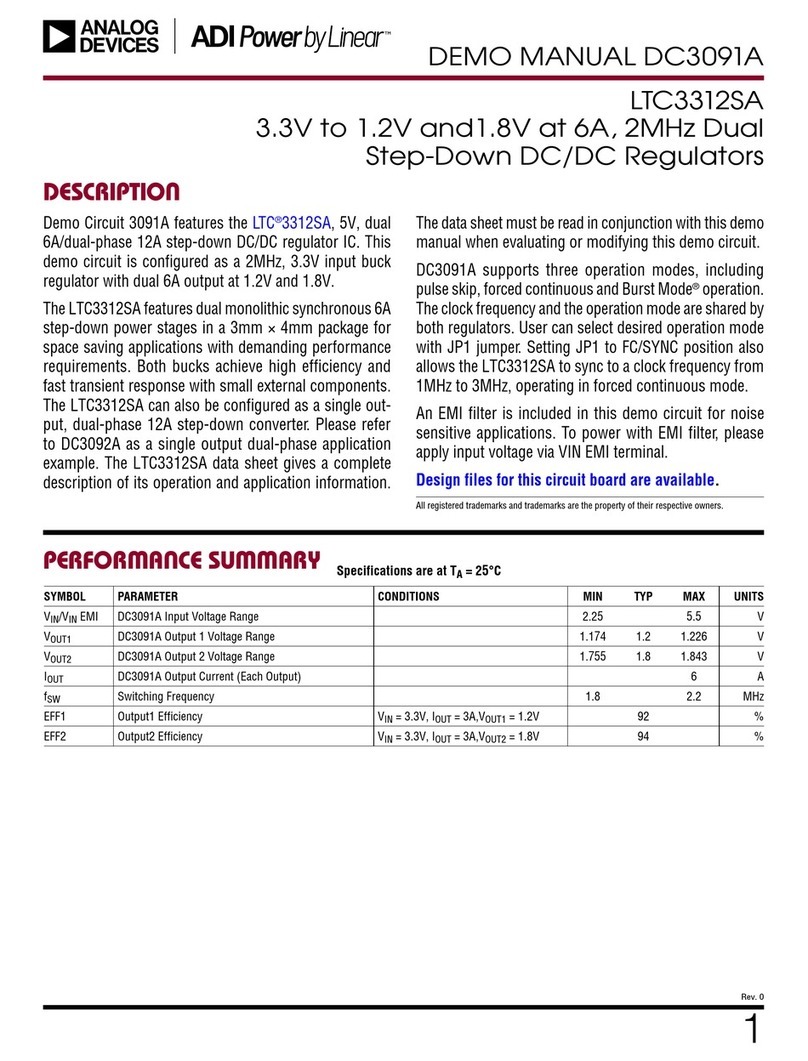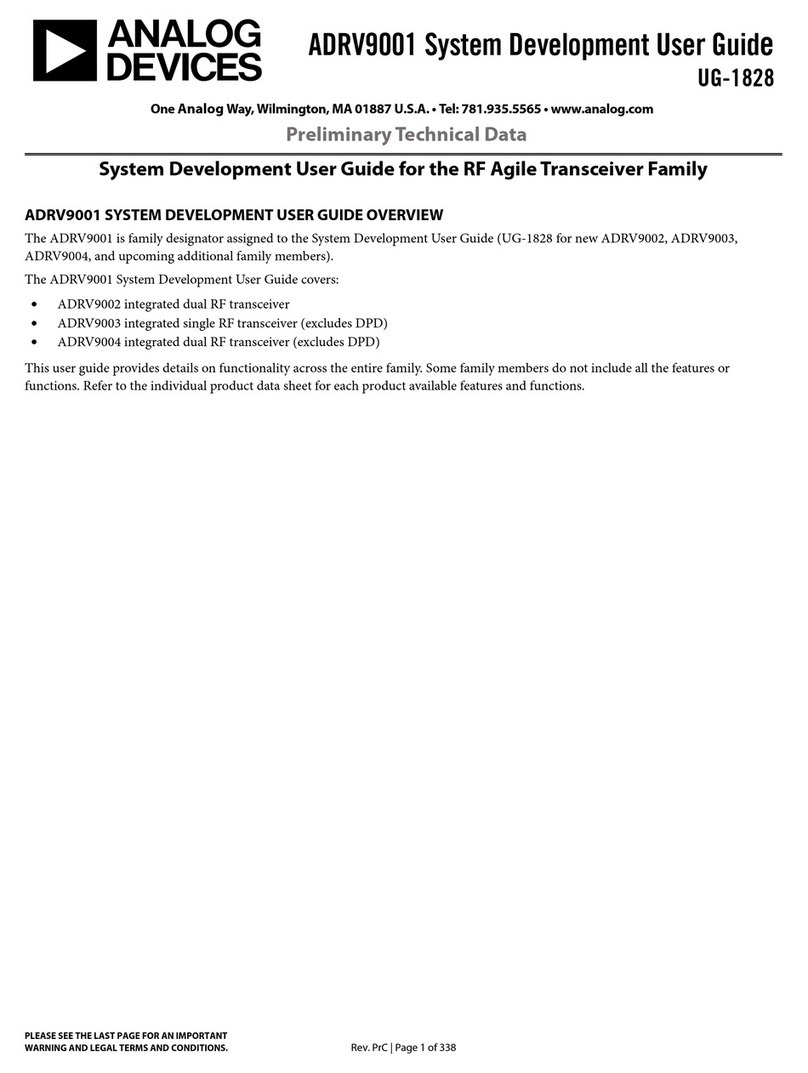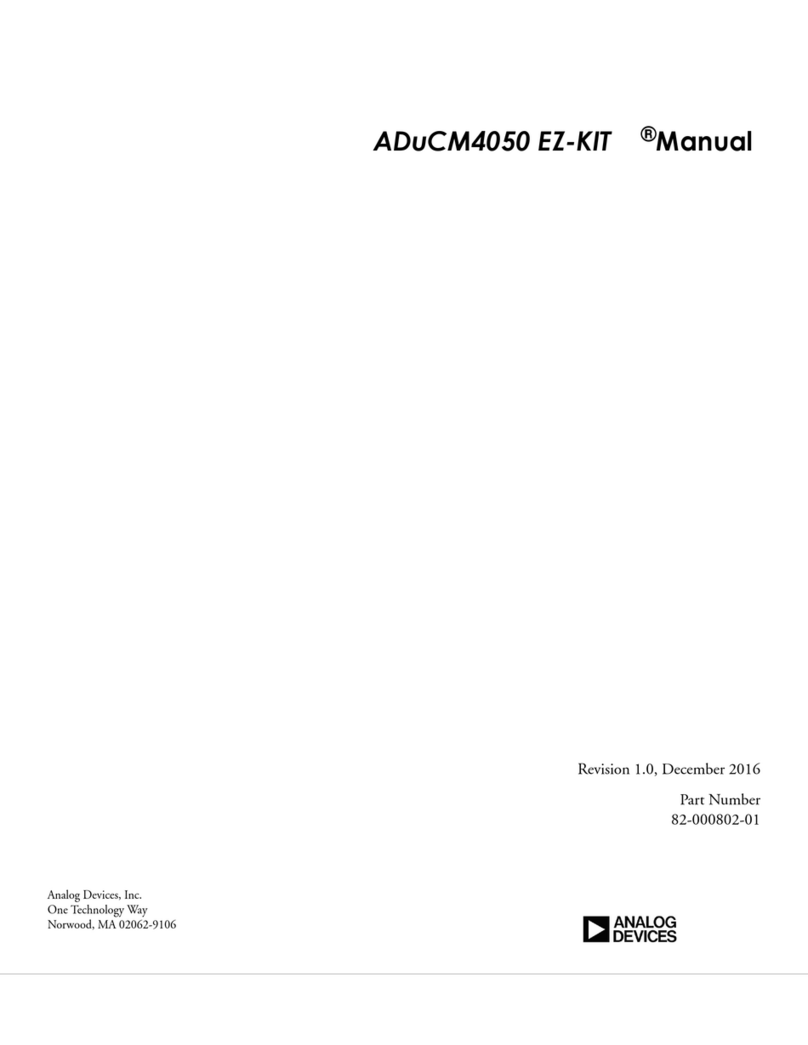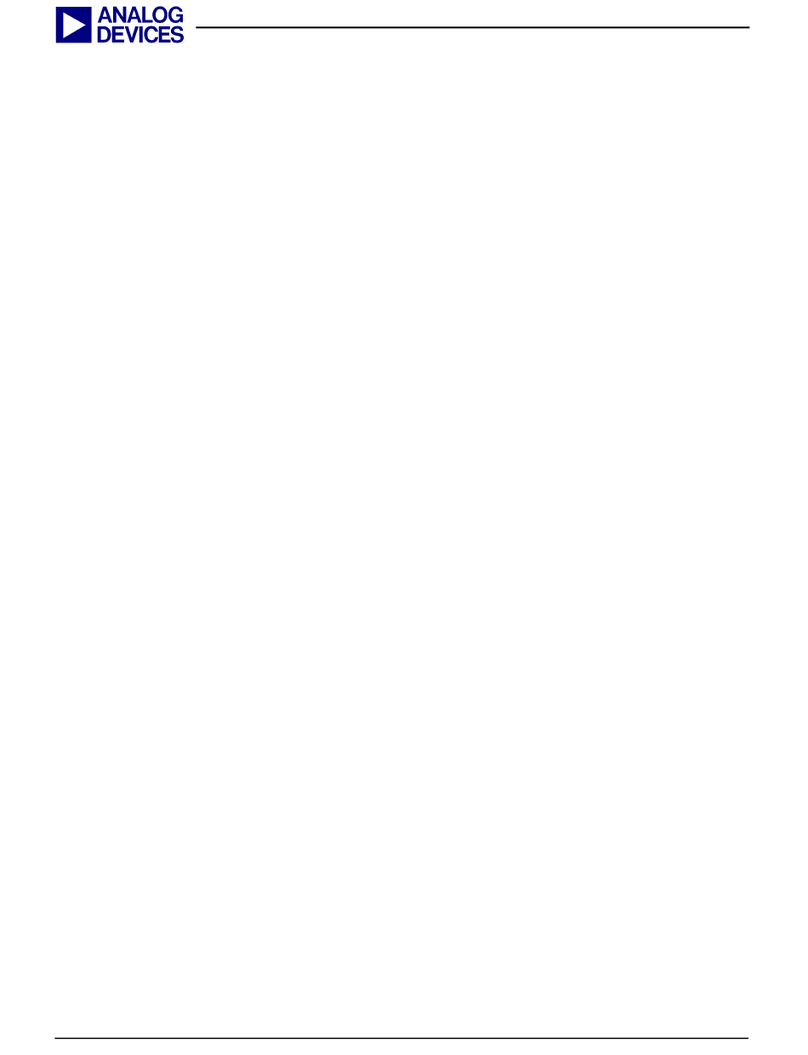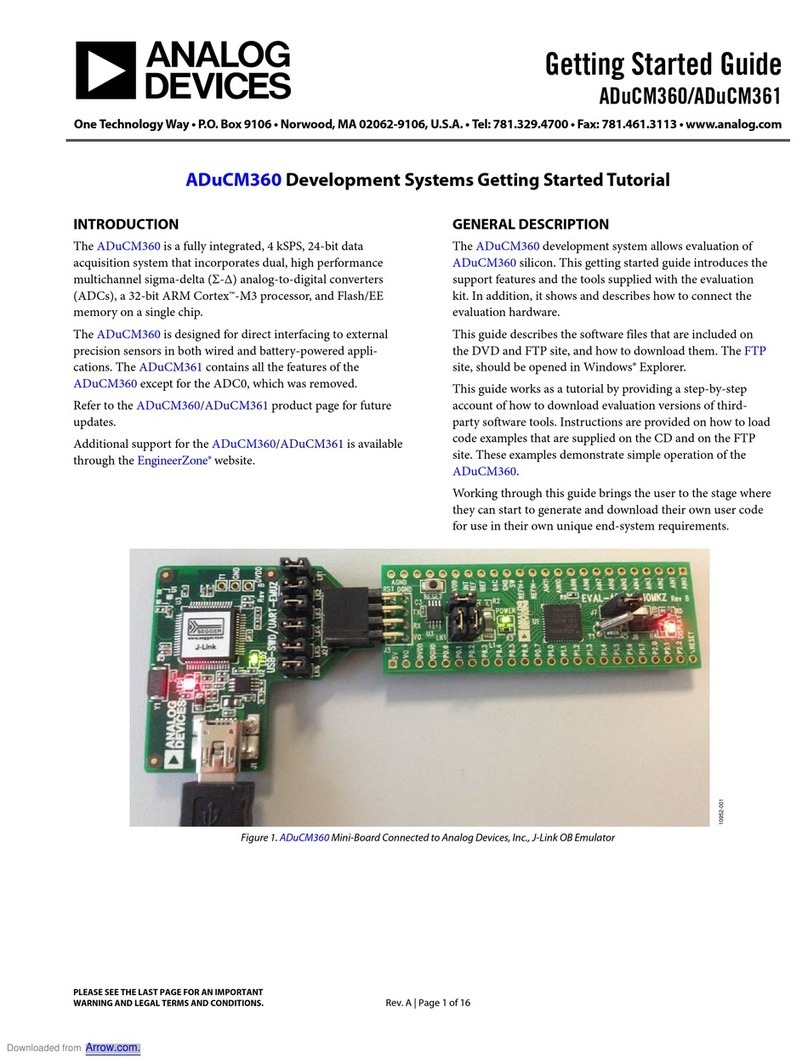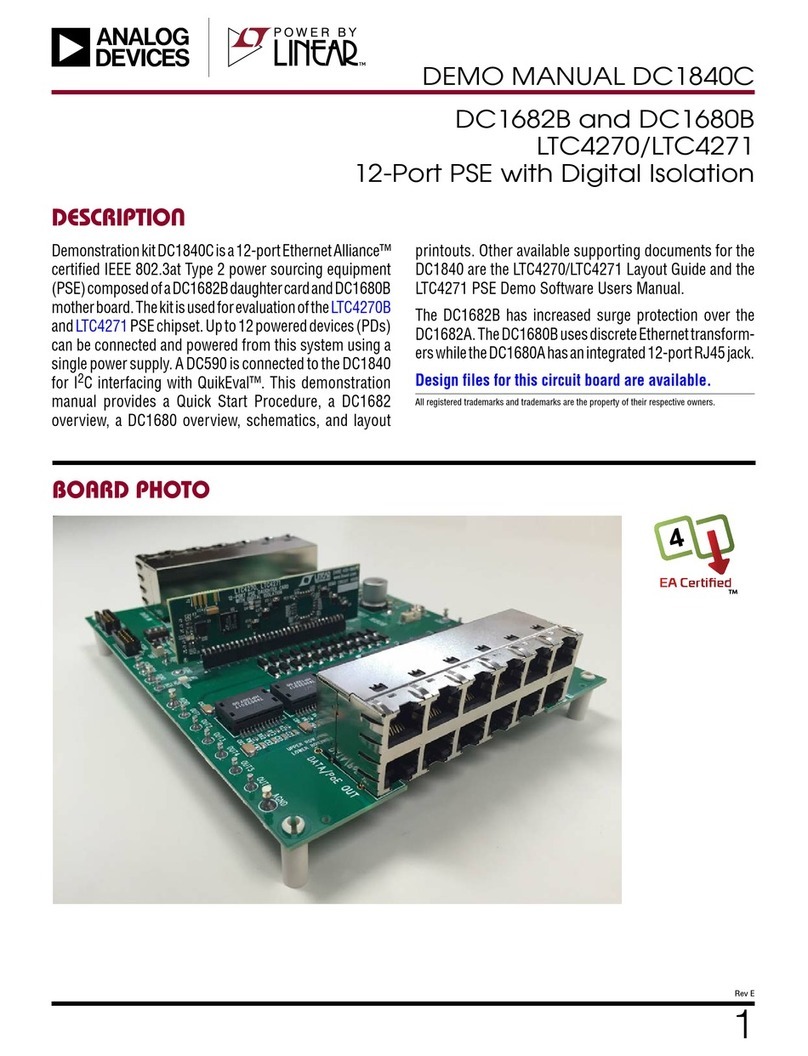
9
DEMO MANUAL DC 316 0A
Rev. 0
DEMONSTRATION CIRCUIT 3160A KIT
The PWRMD0 pin of the LTC9102/LTC9103 at address
ID:00b sets the maximum power allocation while operat-
ing autonomously. This pin connects to the RPWRMD resis-
tor using the PWRMD-1 jumper (JP1). RPWRMD, along
with the AUTO mode reset state are used to automatically
determine the power allocation per port. Refer to Table9
for the PWRMD0 and RPWRMD settings.
Device Configuration
The CFG0, CFG1, and CFG2 pins configure the number of
analog controllers and the port type in the system. Each pin
connects to a jumper that pulls either HI for a logical 1, or
LO for logical 0. CFG2 and CFG1 set the number of analog
controllers in the system. Refer to Table5 for the CFG[2:1]
settings. CFG0 sets whether the system is configured as
a 2-pair or 4-pair PSE, per Table6. Refer to Table7 and
Table8 for specific port type and number of ports for
each of the DC3160A-KITs. Refer to the Evaluating the
DC3160A-KIT as a 2-pair PSE section for more informa-
tion on 2-pair PSEs.
Custom Configurations
An LTC9101-1/LTC9102/LTC9103 system may be config-
ured in an arbitrary combination of 2-pair or 4-pair quads
by storing a custom configuration package in a dedicated
flash partition. If a stored configuration is utilized, the
state of the AUTO, CFG0, PWRMD0, and 4PVALID pins
can be overwritten by the configuration package. CFG[2:1]
are still required to inform the LTC9101-1 how many ana-
log controllers are in the system. AD[3:2] are still required
to inform the LTC9101-1 of the base I
2
C chip address.
Refer to the data sheet for more information and contact
ADI Applications for assistance with generating custom
configuration packages.
Digital Connections
The DC590 USB to I2C controller board is connected to
the DC3017A motherboard at J1 through a 14-pin ribbon
cable. I2C address pin AD3, and AD2 are set with a 2-bit
switch, SW3 on the DC3017A. Refer to Table4 for setting
the individual I
2
C address for each DC3160A-KIT. SDAOUT
and SDAIN can be tied together through a shunt resistor,
R73. Turrets on the DC3017A motherboard provide test
points for SCL, SDAIN, SDAOUT, VDD, DGND, INT, MSD,
and RESET.
MSD and RESET Pushbuttons
Pushbutton switch SW1, when pressed, pulls the RESET
pin of the daughter card logic low. The PSE control-
ler is then held inactive with all ports off. When SW1
is released, RESET is pulled high, and the PSE returns
to the AUTO mode reset state. Pushbutton switch SW2,
when pressed pulls the maskable shutdown input, MSD
pin of the daughter card logic low. When pressed, all ports
that have their corresponding mask bit set in the mconfig
register of the PSE controller will be shutdown. These
ports must then be manually re-enabled via I2C or by
resetting the PSE.
Onboard 3.3V Supply
The DC3017A motherboard has an onboard (non-iso-
lated) 3.3V/100mA buck regulator that provides a local
3.3V, with the net named BUCK33. This onboard logic
supply is for demonstration purposes only and allows for
use of a single supply while evaluating the DC3160A-KIT.
Surge Testing
The DC3160A-KIT can be configured with either the Digital
domain connected to reference ground plane, or with the
Digital domain floating with the Analog domain for dif-
ferent surge test setups. The default DC3160A-KIT con-
figuration has DGND connected to VEE and floating from
chassis ground.
Evaluating the DC3160A-KIT as a 2-pair PSE
The LTC9101-1/LTC9102/LTC9103 PSE chipset sup-
ports both 2-pair and 4-pair modes of operation, but the
DC3160A-KIT layout is specifically for 4-pair ports. Each
4-pair port may be physically split into two separate 2-pair
ports using an Ethernet splitter such as Tripp Lite’s N035-
001 or a custom Y-Cable. This device or cable splits the
pairsets from one RJ45 port at the PSE into two separate
